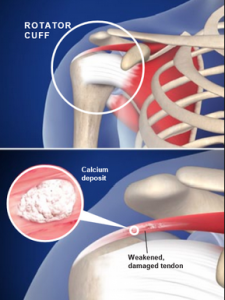Nearly all (99%) of the calcium in the human body is used in our teeth and bones. So what happens to the remaining 1%? The extra calcium can travel to different parts of the body and, depending on where it goes, it can cause some potential problems. Calcium deposits, or calcification, occur when calcium accumulates in soft tissue throughout the body. This affects areas where typically there would not be any calcium present.
Calcium deposits may happen randomly, or the deposit can occur as the result of a traumatic event or injury, such as a fracture. Many times, the affected person has no symptoms and the calcium deposits are harmless and unnoticed. However, in some cases, the calcium can disrupt normal systemic processes and may require treatment.
Common types of calcium deposits and their corresponding symptoms.
- Brain: symptoms could include a loss of mental functioning and abilities, headache, and disorientation.
- Breast tissue: this primarily affects women. Typically, the calcifications are asymptomatic, or without symptoms, and are discovered in routine breast cancer screenings.
- Eyes: there’s evidence that shows calcium deposits in the eyes can lead to macular degeneration, which is a cause of loss of vision or visual field.
- Heart: this typically presents in the arteries. Symptoms include chest pain, changes in heartbeat, and shortness of breath.
- Joints, tendons, and surrounding area: this usually affects the shoulder area and causes discomfort and pain with movement.
- Kidneys: you’ve probably heard of a kidney stone, which can be caused by calcium deposits. Symptoms include extreme pain and blood when urinating and fever.
- Skin: there are several types of calcium deposits that can affect the skin, but they most commonly occur after an injury to the skin. The deposits appear as lesions, bumps, or changes to the skin.
Contrary to one popular belief, calcium deposits are not caused by eating too much calcium. Treatment plans vary depending on what is needed to treat the underlying cause of your symptoms. You may need diagnostic screens like X-rays or CT scans and your treatment plan could include medications, home treatments, or other interventions.
If you suspect you have a calcium deposit that’s become bothersome or may require treatment, make an appointment today to be seen at one of our Coastal Urgent Care centers in Louisiana . Our doctors are friendly, skilled, and efficient, and we’ll get you on your way to feeling better as soon as possible!

